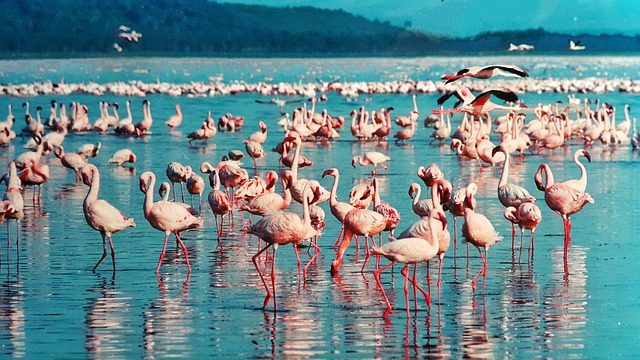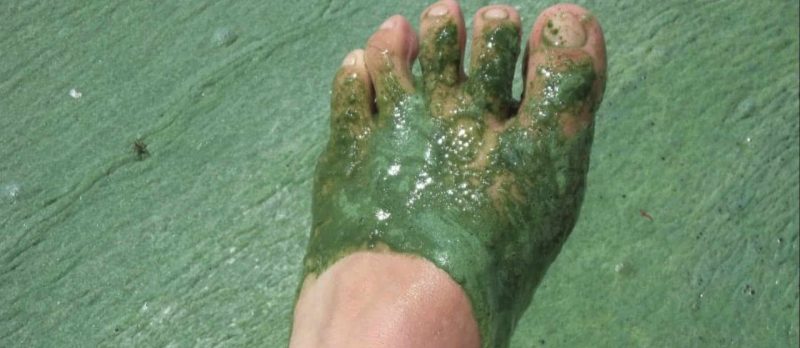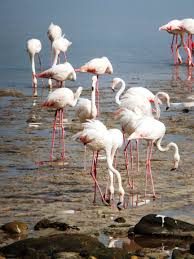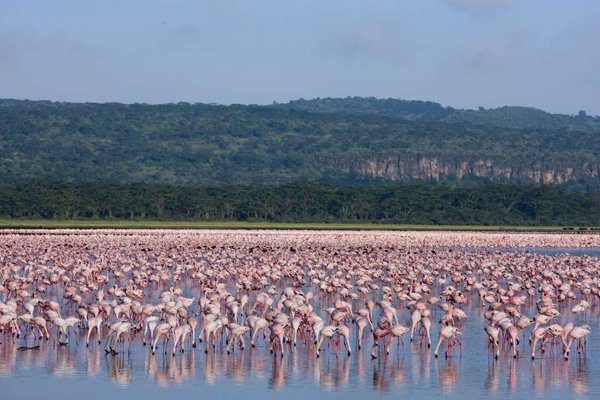A Game Drive Through Lake Nakuru
Once upon a time, there was a vast forest and wildlife area in the beautiful Kenya. Lake Nakuru was part of it. Since 1951 the lake has dried up four times. When the region shrank down, Nakuru Park came into being in 1961, the year of Kenya’s independence. It was also the year when there were torrents of flood sweeping over Lake Nakuru. Initially, the park covered and protected only the lake. Slowly the park was increased over the years to include a larger land, the mountains, good roads and great viewpoints overlooking the lake from Lion Hill and Baboon Cliff. Because the lake was only 2 km away from Nakuru town, hunters inflicted damage to the wildlife and settlers infringed upon the land. Hence, after the independence of Kenya, it was decided to fence in Lake Nakuru. There were also many other measures put in place to stop the hunters and settlers from trespassing the protected areas.
Territorial lake surrounding
Lake Nakuru is a shallow but large lake surrounded by grassland, woodland, and marshes. There are some rocky outcrops as well as the largest African Euphorbia forest on the eastern side. The lake now covers 188km2 of the area and lies south of Central Kenya. It is in East African part of the Great Rift Valley, which is 156km northwest of Nairobi in the district of Nakuru. The lake is part of the soda lakes of the Rift Valley, which is a group of lakes that runs along the eastern side of the African Continent. They are some of the world’s largest and deepest lakes and are well known for the evolution of 750 species of cichlid fish.
Saline lake water
Lake Nakuru is the most saline lake of the lake system in the Great Rift Valley of Kenya. But it supports a rich habitat including a variety of aquatic fauna and flora and is inhabited by water mammals such as hippopotamus and clawless otters. The authorities introduced a species of Tilapiagrahami to the lake, which opened the way for the colonization by many species of fish-eating birds. They consume around 5,000 fish on a daily basis. The fish are seen the most around the freshwater streams that feed the alkaline lake. Therefore, it is a common sight to see flamingos foraging nearby these streams during the season.
Residential lake bird
Lake Nakuru is full of blue-green Cyanophyte Spirulina Platensis, which consists of spiral-formed cells. To survive and reproduce, it needs high temperatures, high concentrations of carbon and phosphor as well as intense sunlight for photosynthesis. Its enormous productivity makes Lake Nakuru a soup of nutrients. At the peak of production, it forms a biomass twenty times
that of the Savannah. The reason for this is the constant supplies of organic minerals such as sodium carbonate that makes Lake Nakuru hyper-eutrophic. Hence, Spirulina Platensis is the source of nutrients for the ecosystem of the lake. The main reason flamingos flock to the lakeshore is because Platensis is their primary food source.
Eating like a bird
The flamingos are very fond of foraging on microscopic organisms. The bird often remains with its head in reversed position. The upper beak acts as a shovel skimming the surface of the water. The lamellae inside the beak, which consists of fifty fine hairs per cm, filter the water inside its beak and holds back the food. The upper beak is triangular in shape. It fits perfectly into its lower beak. The tongue is quite thick and lies in a grove inside the beaks and acts as a pumping piston. They suck water by pulling the tongue back. When it squeezes it outwards, the lamellae are elevated, holding back the food in the beak. In a continuous action, they will then transport the food further down the throat.
Pink-legged flamingos
There are up to two million lesser and greater flamingos in Lake Nakuru. The sight of huge flocks of these flamingos along the lake shore seems like a mirage from a distance because of its combination of white feathers and fuchsia-colored legs. In fact, at times, the lake’s surface is almost never seen. The patterns of flamingo migration are quite mysterious too. Sometimes they depart at night on long journeys between the different alkaline lakes situated along the Rift Valley. So, it is never easy to predict at which lake they are. Flamingos never breed in Lake Nakuru. They prefer Lake Bogoria or Lake Magadi as the best places to lay their egg, which is in the south of Kenya.
Ramsar site designation
Today, the park is famous as a bird sanctuary with 450 species of birds, which includes massive flocks of flamingos and other water birds. It makes Lake Nakuru an ideal site for bird lovers. The number of birds fluctuates periodically depending on the food conditions. If possible, it is a good idea to check with the national park before embarking on a long game drive to view the birds. Carry a spotter’s guide as well to identify the many animals and birds. Lake Nakuru comprises a mere 27% of the park, and its sources of water are the three rivers; the Njoro, the Ender, and the Makalia rivers, as well as many springs. However, with the expansion of the park and various conservation efforts, the lake has since become one of the most visited wildlife spots in Kenya. Eventually, in 1990, it attained its Ramsar site designation.
5 Frequently Asked Questions About Lake Nakuru
To book a safari in Nakuru, please fill out the following form or simply email us on safaris@safari-center.com








